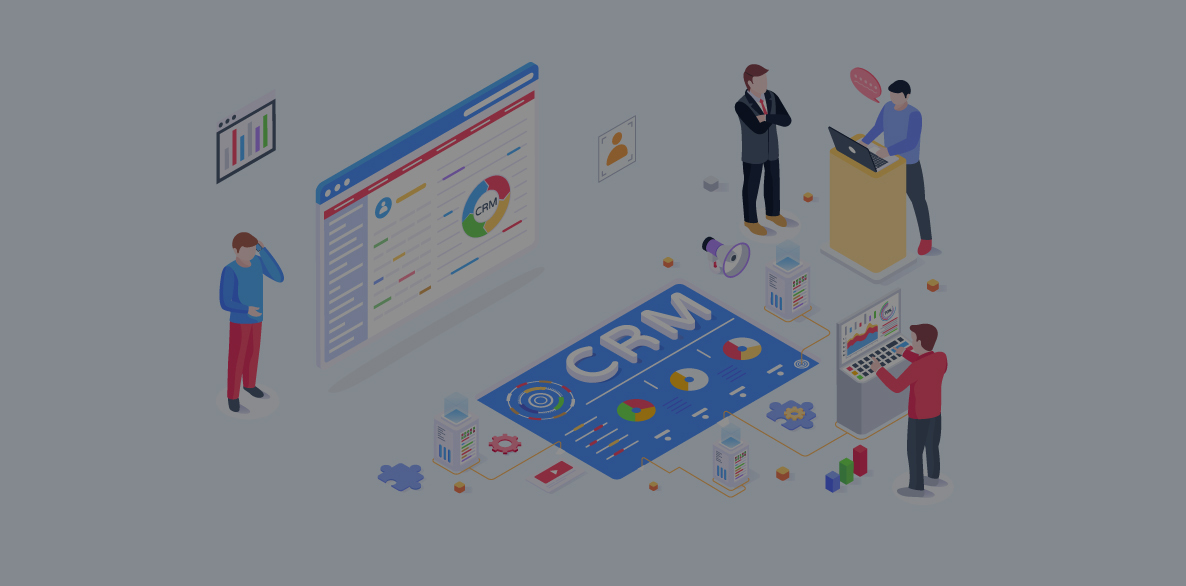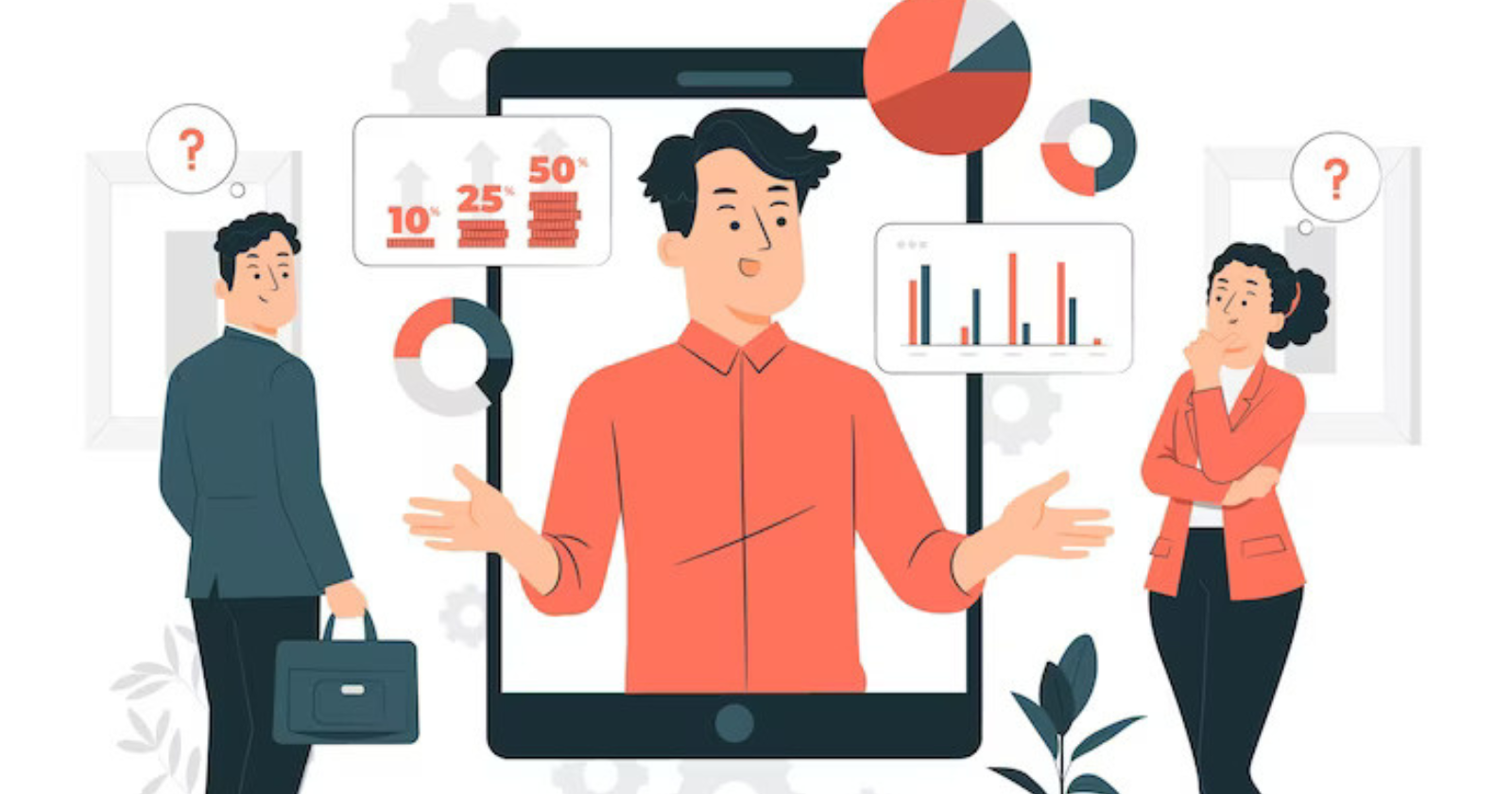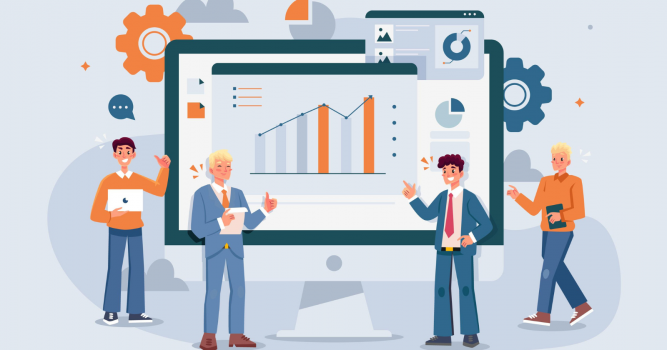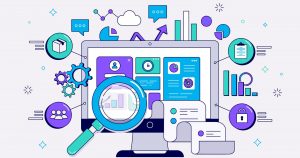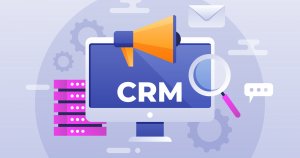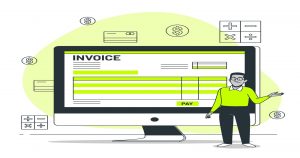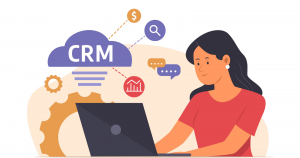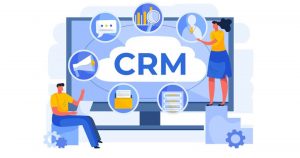Want to learn how to use CRM software?
We’ll discuss everything you should know about how to use CRM tools for your business and how they can transform your sales process in 2025.
Before we get to our guide on how to use CRM, you need to understand why CRM is so important in the current business scenario.
As businesses scale up, manually keeping track of prospects and existing customers via spreadsheets becomes impossible. Not only in terms of time and energy, but managing customers manually also hurts customer relationships.
With the rise of affordable technologies, business solutions like customer relationship management (CRM) have been democratized.
According to estimates by Grand View Research, organizational departments, including sales, marketing, and customer support, are increasingly integrating AI-powered CRM systems to improve their operations.
Furthermore, the global market for customer relationship solutions is expected to grow with a compound annual growth rate (CAGR) of 13.9% from 2023 to 2030. Notably, in 2022, the market was valued at $58.8 billion.
The US market, on the other hand, is expected to grow at a CAGR of 12.5% from 2023 to 2030.
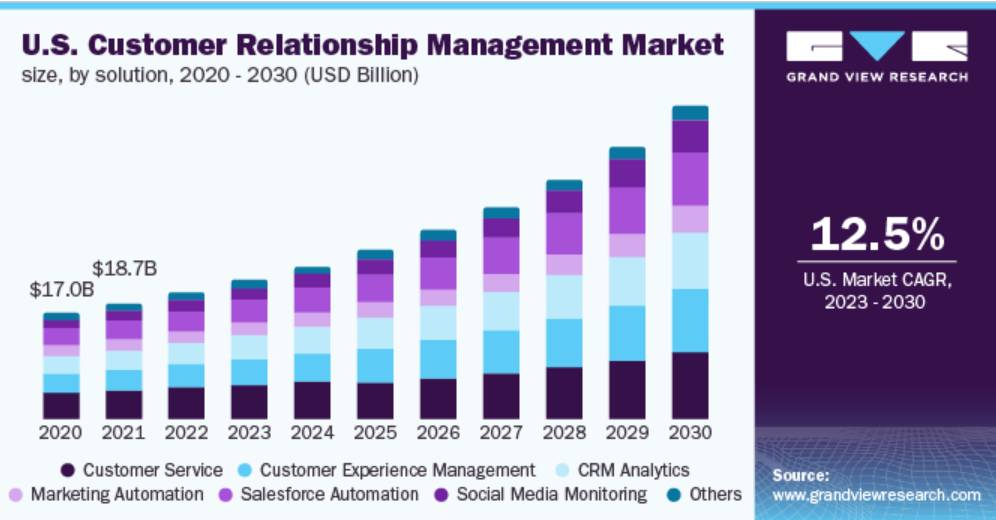
Image via Grand View Research
Considering the rapid adoption of CRM software, it’s clear that businesses will continue to use them to deliver the best service to their customers.
Given the fact that most businesses are already using CRM software, the market growth for CRM indicates that they’ll explore novel ways of utilizing CRM technologies to enhance their customer relationships.
What does it mean for you as a business? How will you cope with the increasing use of technology for customer relationship management (CRM)?
You can start by learning what CRM is and how to use CRM.
What is a CRM?
CRM stands for customer relationship management. It’s a powerful tool that helps businesses organize customer information and manage relationships.
As your business grows, manual data entry becomes impractical. CRM systems offer valuable tools to streamline this process.
In its early days, CRM software was considered an advanced version of Rolodex.
However, over time, businesses and CRM vendors saw more opportunities to integrate with CRM solutions, which led to the modernized version of CRM.
In 2025, CRM software solutions will be capable of managing the entire sales pipeline and customer support, helping businesses build fruitful relationships with their prospects and customers.
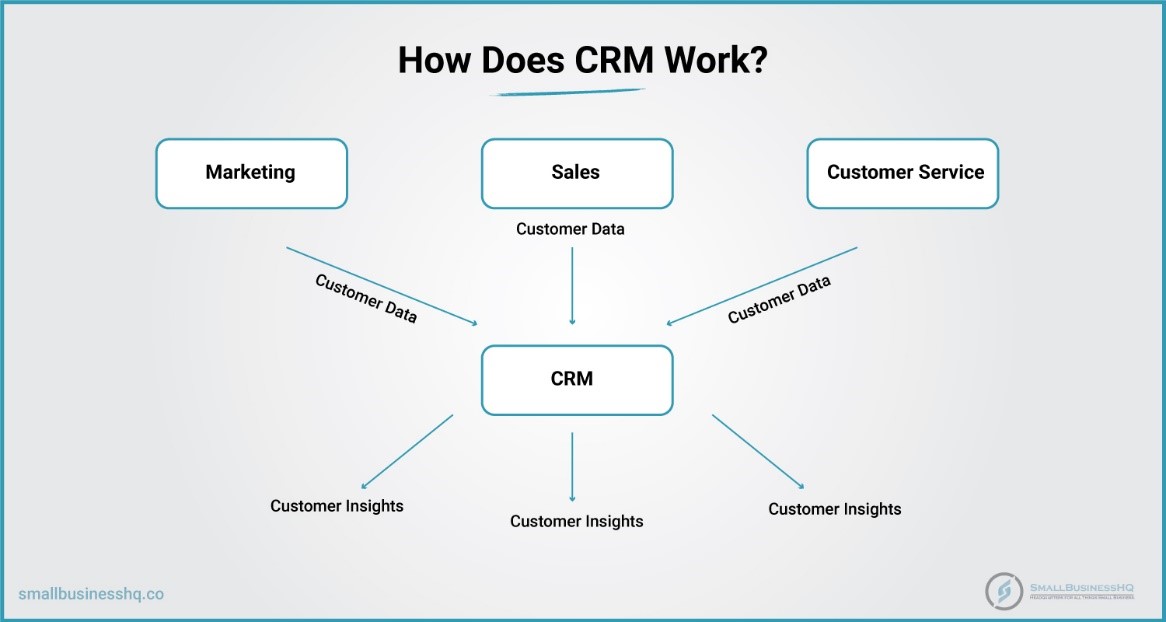
Irrespective of how overwhelming the CRM possibilities might look, the market for CRM still doesn’t seem to have reached the saturation point. Businesses are finding new ways to use CRM, and the possibilities are endless.
Your business can also benefit from CRM software, but only when you know how to use CRM the right way. Businesses face several CRM challenges while adopting a tool because they don’t know how to use CRM to build customer relationships.
We’ll get to how to use CRM in a bit. First, let’s talk about the different types of CRMs available on the market.
Types of CRMs
As a business, when you hunt for the right CRM system, you’re more likely to get overwhelmed with the types and options available in the market.
As per their use, CRM software solutions are often grouped into three primary types: operational, analytical, and collaborative.
Each type of CRM is designed to handle specific business processes related to customer information and build relationships.
Let’s discuss the types of CRM one by one before we get to how to evaluate a CRM and use it.
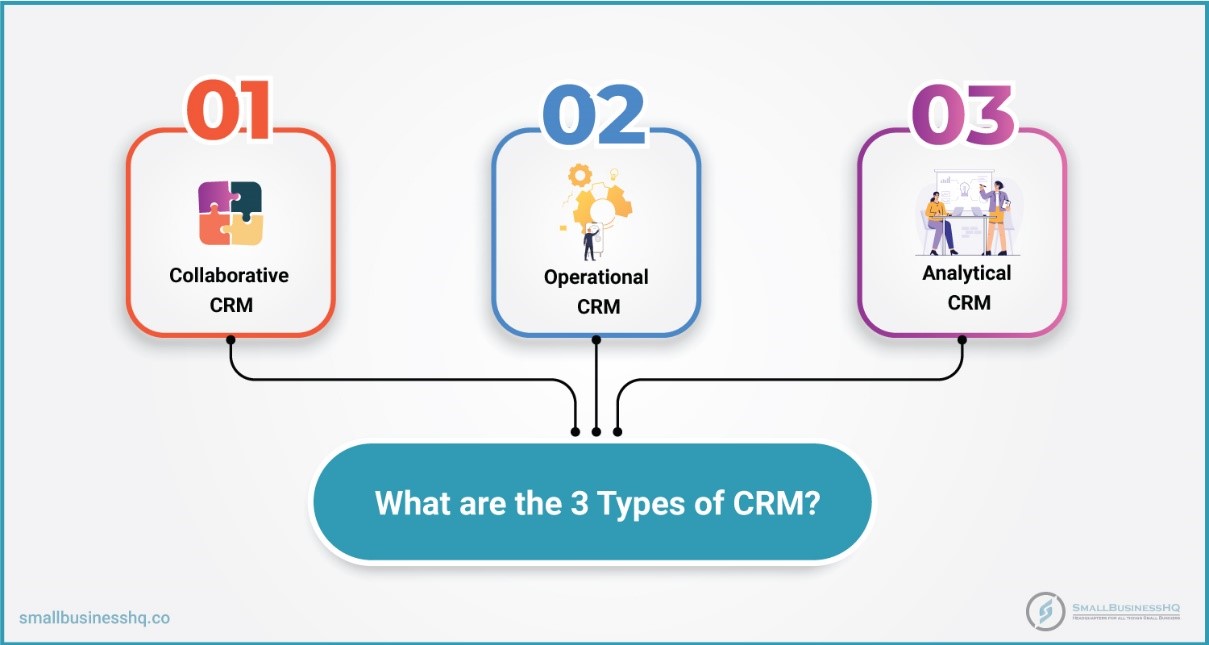
1. Collaborative CRM
Also known as strategic CRM, collaborative CRM centralizes customer information so that sales, marketing, and customer support teams can all access it. As a result, these teams will be better prepared to do their respective jobs and collaborate with each other.
Collaborative CRM enhances your customer relationship management by centralizing information. This allows your team to provide a consistent experience throughout the customer journey, from initial contact to post-sale support.
Interaction management focuses on all types of customer interactions. It records the customer communications and their medium.
Channel management, on the other hand, uses the insights extracted from customer interactions to decide the ideal medium the company should use to communicate with a customer. Since the customer information is shared in a centralized location, each department can access the insights.
One real-world example of how to use a CRM for collaborative purposes is sending car service reminders. The customer service team utilizes the sales and marketing data to find out when the vehicle was sold and what the customer’s preferred communication channel is to send service reminders.
Collaborative CRMs are suitable for businesses that have many departments and struggle with keeping all the departments on the same page.
Moreover, collaborative CRM is a must for companies with operations in multiple locations.
Some great collaborative CRM software includes:
1. Microsoft Dynamics 365

Image via Microsoft Dynamics 365
Typical of any Microsoft tool, this CRM combines many tools in one package. This tool allows you to manage customer data, track sales history, and handle marketing campaigns all in one place.
A big plus is that it works well with other Microsoft products, making it easier to use if you’re already familiar with tools like Outlook.
2. Zoho CRM
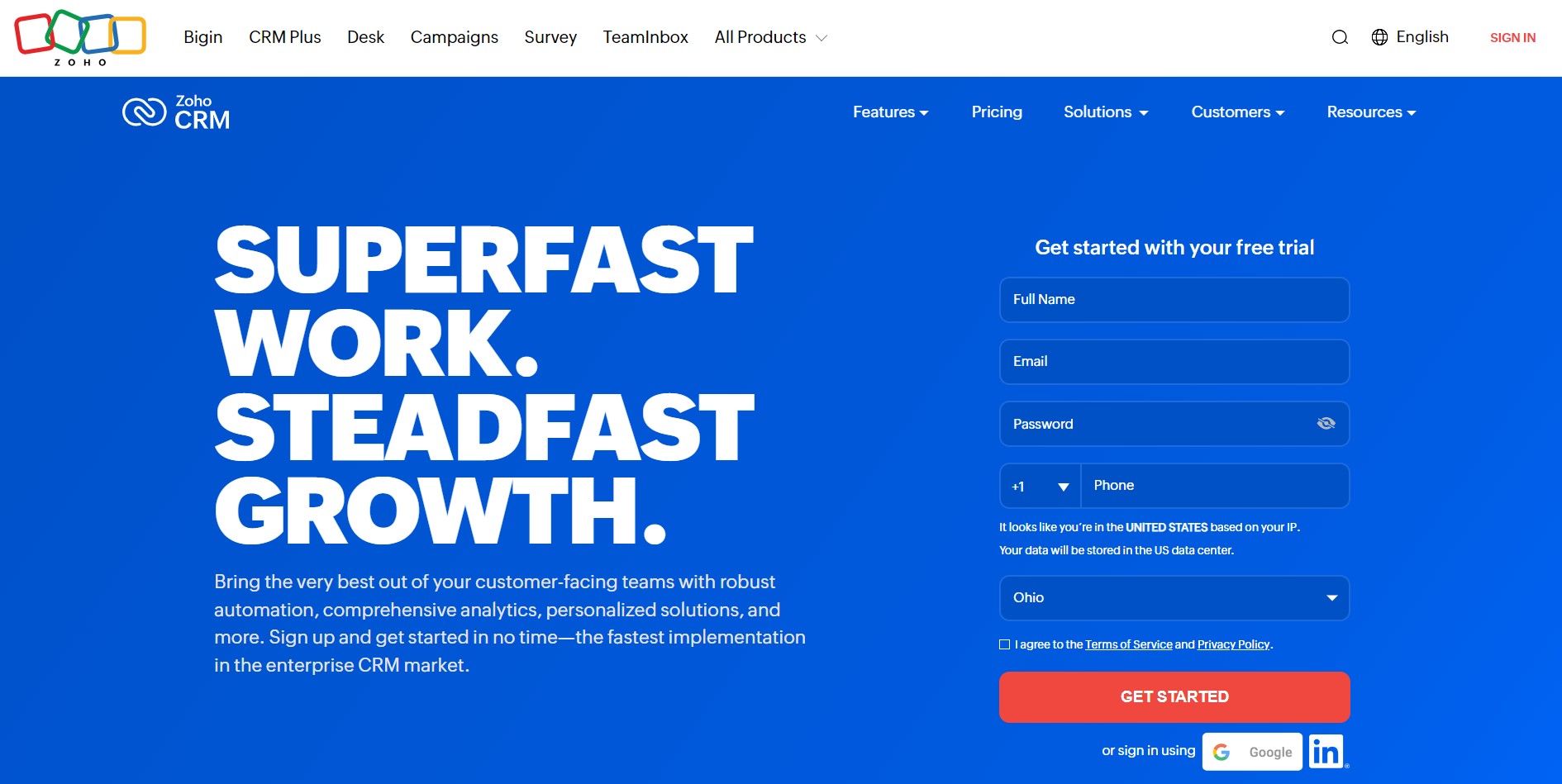
Image via Zoho CRM
Zoho CRM is an affordable option that is perfect for small to medium businesses. It offers features like team chat, file sharing, and customer data tracking. A standout feature of this tool is that you can start with the basic features and add more as your business grows.
2. Operational CRM
As the name suggests, this type of CRM deals with the operational part of sales, marketing, and customer support processes.
Operational CRM is ideal when your business grows and you need to manage a large customer base. It helps streamline your sales process by providing valuable tools to automate tasks like lead scoring and email follow-ups.
Operational CRMs can help businesses visualize and handle customer journeys efficiently, even when there are several customer touchpoints like websites, brick-and-mortar stores, and third-party marketplaces.
Humans aren’t good with repetitive and mundane tasks—that’s why machines exist. Operational CRM provides automation tools to delegate these tasks to AI so that your employees can focus on the more important tasks.
This opens up your employees’ schedules for more creative and cognitive aspects of their jobs.
Wondering how to use CRM for operational purposes?
The real-world examples of operational CRM are email automation and lead generation automation.
Operational CRMs are ideal for companies that deal with a large number of customers and need to cut sales, marketing, and customer support costs.
Examples of operational CRM tools include:
1. HubSpot CRM
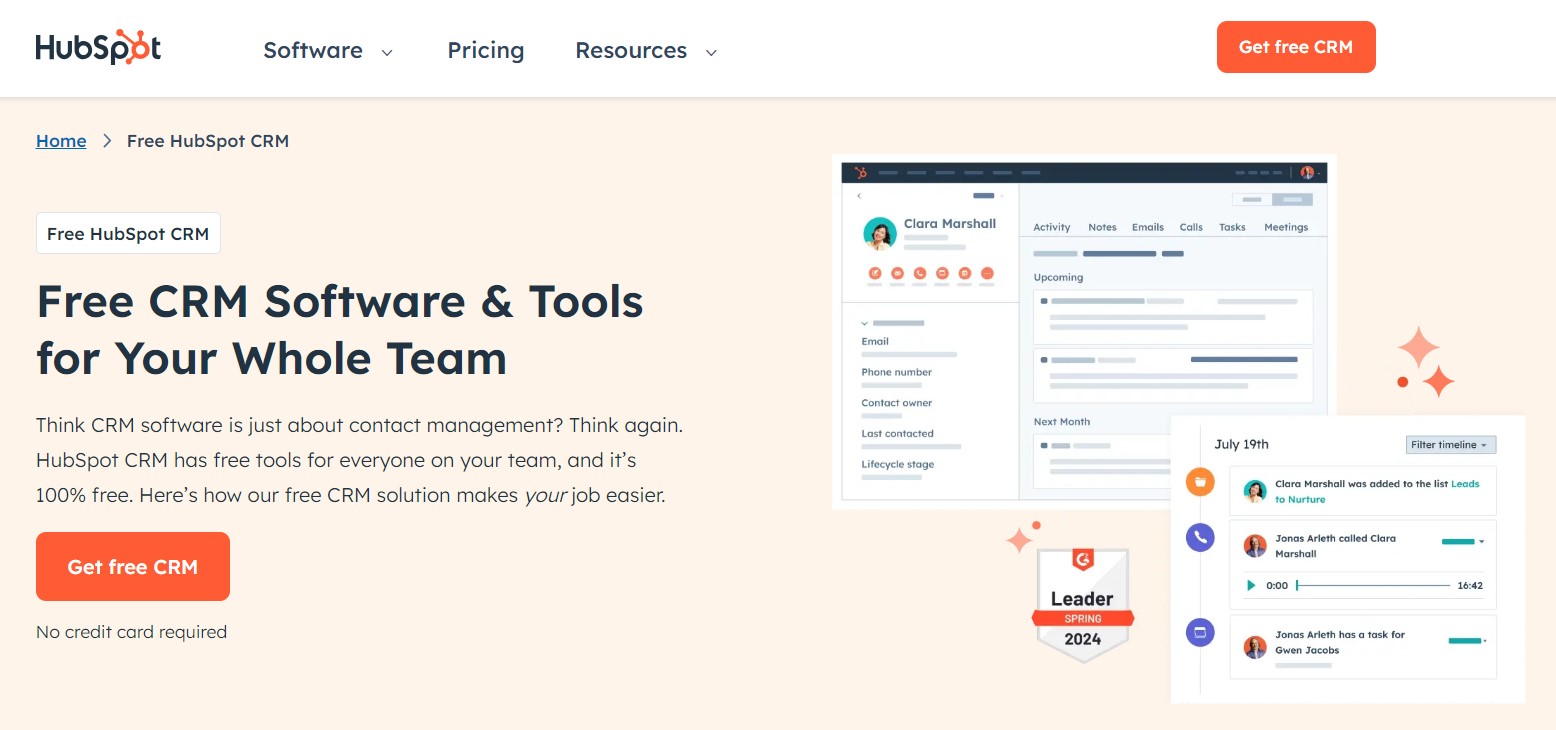
Image via HubSpot CRM
HubSpot is a popular name in the business management space and is great for beginners. This tool helps you manage contacts, track deals, and automate tasks.
For instance, you can use HubSpot to send follow-up emails automatically, saving you time and ensuring no lead is forgotten.
2. Freshsales
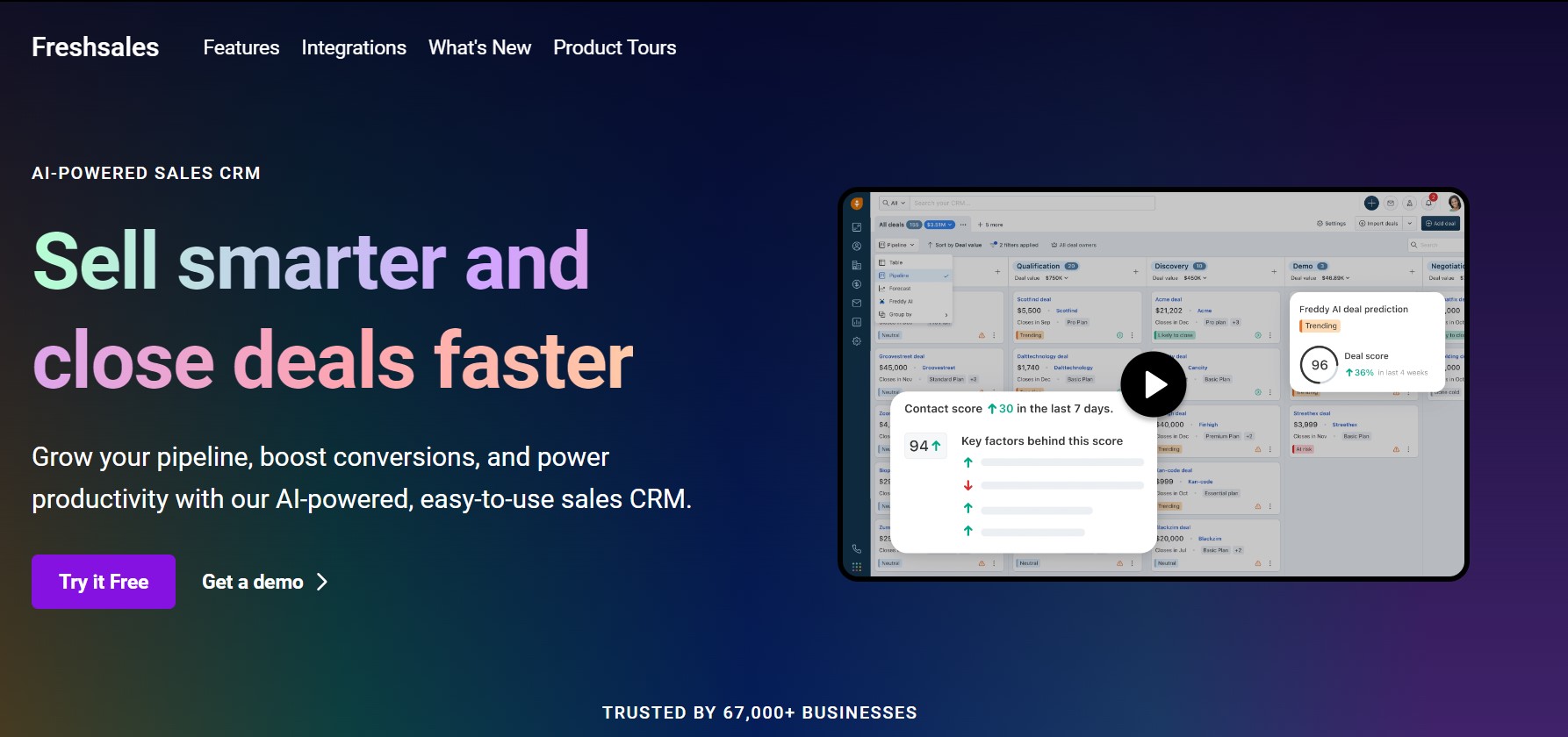
Image via Freshsales
Freshsales is designed with sales teams in mind. It offers features like lead scoring, which helps you focus on the most promising leads. It also includes phone and email integration, allowing you to contact customers directly from the CRM.
3. Analytical CRM
You probably have heard that data is the new oil. Yes, it is, but not until you refine it to get insights. Refinement is the principle behind analytical CRM systems.
Almost every CRM tool or customer touchpoint system tends to collect customer information. However, an organization can only make sense of this data if it has the tools to analyze it.
The analytical CRMs are loaded with features that allow you to identify customer behavior trends by analyzing large quantities of customer data. With an analytical CRM in place, you can better understand the steps you need to take to convert leads into new customers, retain them, and serve them in the best way possible.
The very simple use of an analytical CRM lies in finding the most suitable way to approach new customers for sales promotions. For instance, if you have an analytical CRM in place, you can easily determine which channel you should use to send discount emails to your customers.
Analytical CRMs are most suitable for companies that have loads of customer data and operate in a highly competitive market.
Many businesses require a mix of all three CRMs. But if your business is new, having analytical CRM functionality is unnecessary. Also, if you don’t have several business locations and large customer support, sales, and marketing teams, don’t invest in collaborative CRMs yet.
In this case, operational CRMs are the best option for you.
Some popular analytical CRMs are:
1. Salesforce Einstein Analytics
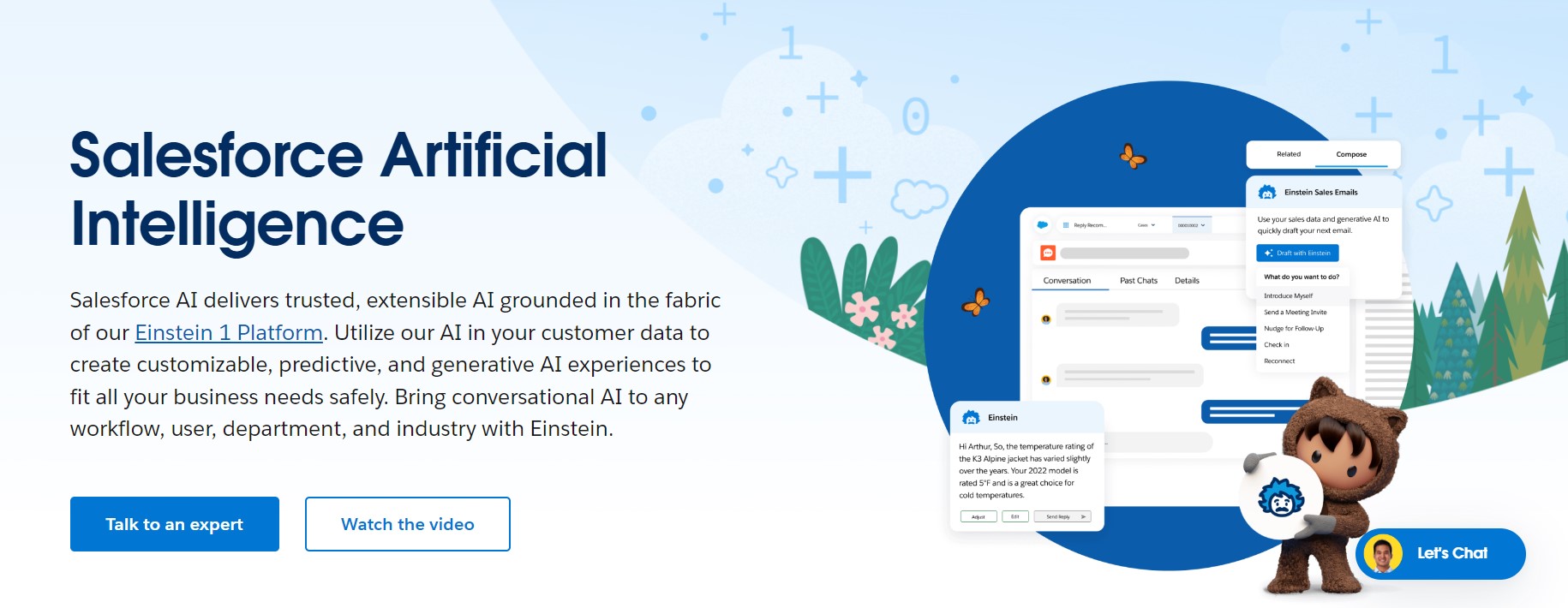
Image via Salesforce
This powerful tool uses AI to analyze your data. Salesforce can predict which leads are most likely to become customers, helping you focus your efforts where they matter most.
2. Domo
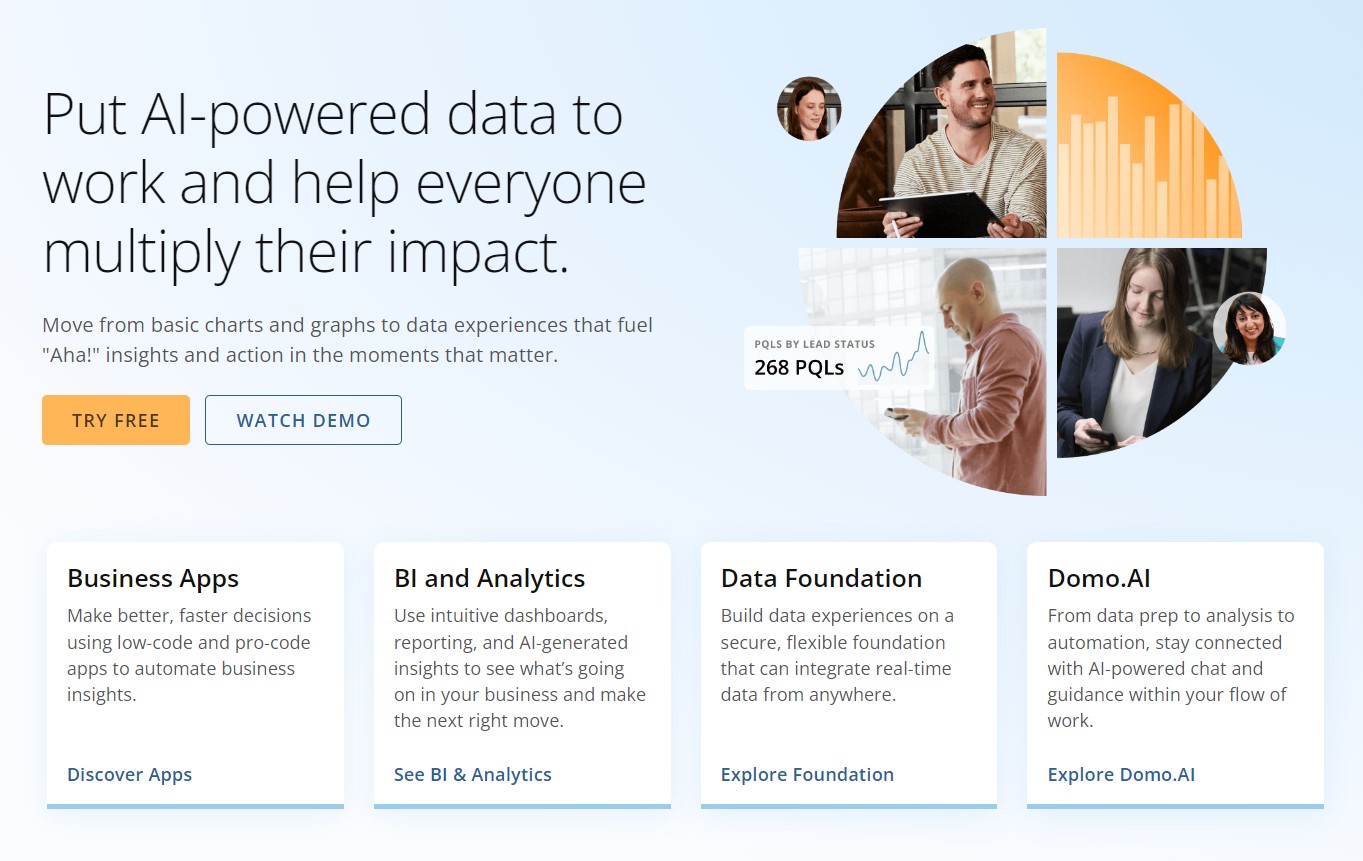
Image via Domo
This CRM specializes in creating easy-to-understand visual reports. With Domo, you can see your data in charts and graphs, making it simpler to spot trends and make decisions.
You May Also Like:
Key Use-Cases of a CRM System
Although traditionally, CRM was used primarily in the marketing and sales processes, businesses have now started using CRM tools in the supply chain, customer service, and HR functions as well.
Here are some use-cases of CRM that you should know before you learn how to use CRM.
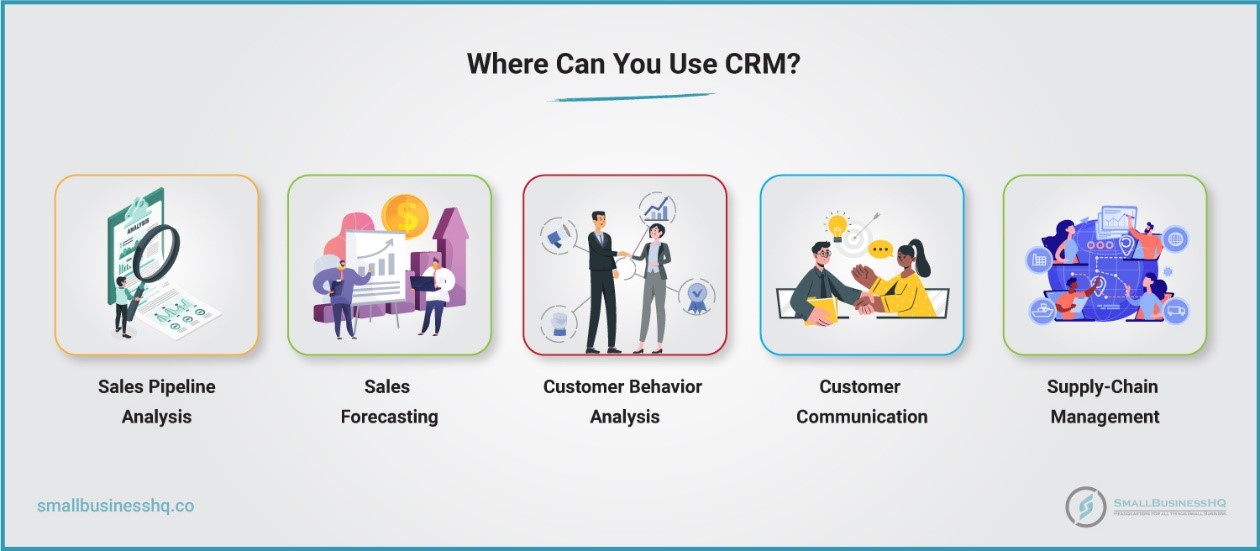
To Understand Sales Pipeline
With a CRM in place, the sales representatives will benefit from reduced administrative work and a better understanding of their prospects. They can also benefit from the time saved by operational CRMs to feed in and manage the customer data.
Moreover, the sales managers can monitor the progress and effectiveness of their team members and campaigns. For example, they can see how effectively the individual products, campaigns, and even sales teams have performed over time. This is just one example of how to use CRM to understand the sales pipeline and you can find more.
To Forecast Sales
If your marketing team knows how to use CRM systems to get a clear insight into future customer demand and sales, you can achieve higher revenues. Based on the findings, the sales team can map out the sales promotion schemes to boost revenue based on the demand patterns.
To Analyze Customer Behavior Patterns
The marketing team can also use insights into customer behavior, such as how customers find the brand and which customer touchpoint is most effective in retaining the customers.
For example, CRM solutions can suggest that customers acquired through organic marketing channels are more likely to retain for a longer period of time than those acquired from paid marketing. Using such insights, a marketing and sales manager can create strategies to attract and retain customers.
To Track Customer Communications Across Channels
Customers often complain about having to explain their issue every time they connect with customer support representatives for the same complaint.
Let’s say, a customer has raised an issue over a live chat, and the customer service representative gets back to them over a phone call. The customer shouldn’t have to repeat themselves in order to get their issue resolved.
Want to learn how to use CRM to mitigate such issues?
The CRM system can centralize all communications with a particular customer so that whoever interacts with them has a record of past interactions.
Companies can use collaborative CRM systems to effectively track customer interactions and communications, leading to higher customer satisfaction levels.
To Manage Supply-Chain
Some modern CRM systems have supply-chain management functionality, but many businesses don’t know how to use CRM for managing their supply chain.
Of course, supply-chain management is more the job of an ERP system, but many small and mid-scale businesses can’t afford to have two systems in place. In fact, they often don’t have the need for a dedicated ERP system. Therefore, many CRM solutions extend their offer to include additional functionalities for businesses.
With supply-chain management integrated into CRMs, businesses can track meetings with suppliers and partners, keep a record of requests and orders, and track delivery dates.
For example, having a supply chain integration into CRM will allow a delivery business to send the expected delivery updates to its customers automatically.
Now you know what a CRM system is, its types, and its use cases.
But how can you practically start to use it?
Let’s discuss how to use CRM in the next section.
You May Also Like:
How to Use CRM
Not every business knows how to use CRM the right way, and that’s why not all CRM implementations deliver the desired results.
If you’ve decided to invest in a CRM system for your business, you must first learn how to use CRM for your business.
Here’s our step-by-step guide on how to use CRM.
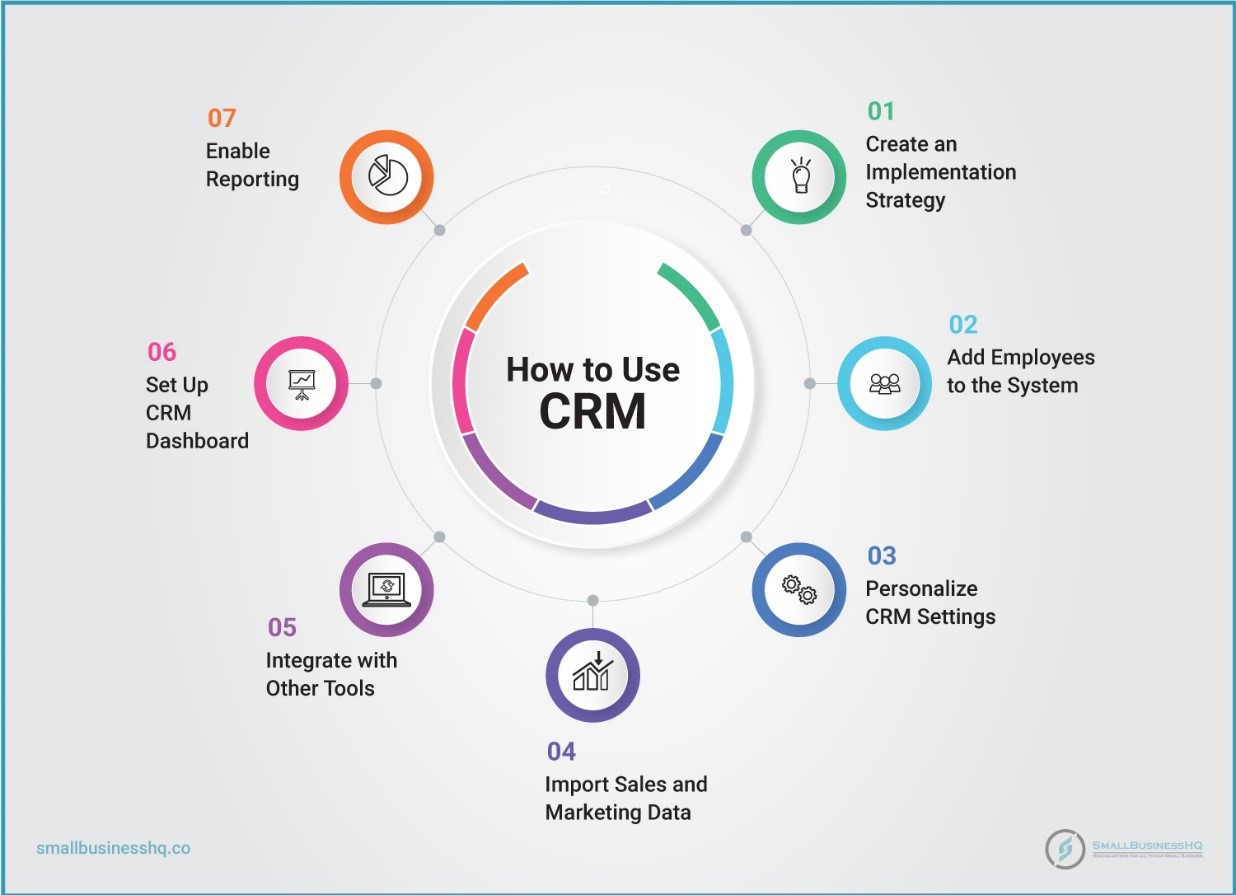
1. Create a CRM Implementation Strategy
One of the reasons why CRM implementations fail is that businesses don’t strategize before the implementation. Developing a solid strategy with practical CRM tips is crucial for success.
Your strategy should outline how to use CRM to manage existing customers and attract new ones. A well-thought-out CRM strategy can help you automate tasks, freeing up time for more important work.
A CRM solution is made of several tools and features (we’ll discuss them later in this article), and every feature/functionality adds to the cost of implementation. Hence, you need to be smart to decide which features to go with, and you can only know this when you identify your business goals behind the implementation and understand how to use CRM.
How can you create a CRM implementation strategy?
First, discuss with your sales, marketing, and customer support teams to understand what they require from a CRM (after all, they’ll be the actual users). It’s great to incorporate the actual users into your strategy. This motivates them and makes them confident about the benefits of CRM and how to use CRM to do their jobs well.
Secondly, define your ideal buyers by creating buyer personas. Buyer personas are not only useful for marketing and sales teams, but they’ll also help you understand what customer types should be added to your CRM system.
Lastly, map your sales pipeline to show the ways your customers typically interact with your business and how many touchpoints a prospect goes through to become a customer.
The strategy you create might not be hard and fast. Of course, over time, the sales pipeline will improve. So make sure that your CRM can adapt to these changes.
2. Add Employees to the System
Once you’ve implemented your CRM, start adding your employees at an early stage. The sooner you add the actual users, the better.
However, before adding your employees, make sure that you’ve trained them well and that they’re motivated to use the CRM as a replacement for the conventional approach.
Not all your staff would be happy to change and use CRM instead of their comfortable workflow.
How can you fix this? We recommend you appoint some of your employees as CRM advocates.
The reason is that CRM implementation comes with the challenge of non-tech-savvy and elderly employees being reluctant to use it. This is where your CRM advocates can help them adopt the technology.
You should also clearly convey the benefits of using CRM and train your employees to reduce resistance. If your employees know how to use CRM, they’ll be more inclined to adopt the technology.
Make sure you choose a CRM solution that is easy to use to further smooth the transition process.
3. Personalize CRM Settings
If you want to learn how to use CRM in a way that gets the most benefits out of it, then you must learn how to personalize your CRM. Personalization is the key to higher ROI.
Unless you’ve invested in a custom-built CRM system, your CRM will generally come with default settings. You’ll have to feed in details like customer journey and sales pipelines to use your CRM system for your specific use cases. For starters, you can use the sales pipeline you’ve built while strategizing.
However, don’t stop here. Take a month or two to observe the way your prospects convert into customers. Understand what unique personality traits your customers have compared to those who buy from your competitors. Analyze the medium through which your customers get in touch with your sales team.
For example, if your sales pipeline consists of ‘connect,’ ‘qualify,’ demo,’ ‘trial,’ and ‘close,’ create deal stages for each checkpoint in your CRM pipeline.
Another thing you should change is the prospect/customer data fields. CRMs come with a default set of fill-in-the-blank fields such as creation date, phone number, email address, city, etc.
Your sales team might manage customer information in a different format. So create those custom fields before you import all your sales and marketing data to your CRM.
That brings us to the next stage in our guide on how to use CRM.
You May Also Like:
4. Import Your Sales and Marketing Data
At this step in this guide on how to use CRM you should import all your sales and marketing data into the CRM system.
Most probably, you’re using spreadsheets or a basic CRM to manage your customers’ data for sales and marketing purposes. Most of the off-the-shelf CRM tools out there allow data upload via .CSV files, and hopefully, your CRM does too.
However, you might have to change the data formats or shift the columns here and there to match the standard format of your CRM. Don’t worry; you can always ask your CRM support service if you have any trouble uploading your data.
Importing sales and marketing data is not exactly a one-time job. You should also connect your CRM with all internal systems that generate this data. Please do so to avoid a major CRM mistake.
We’ll cover that in the next section of this guide on how to use CRM.
5. Integrate CRM with Other Tools You Currently Use
The next step in learning how to use CRM is the integration with other tools. After all, CRM collects customer data from different sources and organizes it in a centralized dashboard.
To get your sales, marketing, and customer service teams on the same page, you need to have a centralized data point, so make sure your CRM software has that. This will provide you with a 360-degree view of your prospects and customers.
In addition to centralizing information, you will also have to integrate your CRM with other marketing and operational tools you currently use for specific purposes.
For example, if you’re using a different tool for email marketing automation and want to continue using that after implementing the CRM, make sure to integrate that tool with your CRM. If you don’t know how to do that, contact the support staff of either of the tools, they’ll probably help you out.
By integrating your CRM with different tools, you can create streamlined workflows that seamlessly connect different aspects of your business.
6. Set Up Your CRM Dashboard
To ensure that your teams run at their maximum efficiency, you need to have an insight into your operational performance. This is where the CRM tools can be useful for managers and senior-level executives.
Wondering how to use CRM for this purpose?
A CRM can act like a control panel that you can customize for your specific goals and objectives.
To get started with the customization, choose which statistics matter to you most and try to get them at the front of your dashboard so that you can get an overview of your operations as soon as you log in.
For example, if your sales team is focused on selling X and Y product lines for the current month, you can set individual metrics for these product lines and place them on the home screen (or some other place where you can access them quickly).
You can also create custom reports and dashboards according to your unique business needs.
7. Enable Reporting
The next step in learning how to use CRM is enabling the reporting functionality.
Your managers need reports and insights to understand their team’s performance and work on improving efficiency. With CRM in place, you don’t have to ask your sales, marketing, and customer support representatives to create reports. CRM can create reports on monthly sales analysis, customer acquisition channels, etc.
As the CRM system will be the hub for the data related to sales, marketing, and customer support departments, you can easily access reports related to these departments. You can use these reports not just for making strategic business decisions but also for evaluating employee performance.
For example, you can keep customer support staff motivated by sharing the individual person’s performance in providing support to the customers. Or you can share individual campaign performances with marketing staff to show gratitude for their phenomenal work.
Alright, now you know how to use a CRM.
A CRM is only effective when it has specific features that your business needs to improve its sales, marketing, and customer support operations.
Let’s discuss the features your CRM must have in order to be effective.
You May Also Like:
Key Features of Good CRM Software
As CRM is vital for businesses to survive and flourish in this complex business scenario, the importance of choosing the right solution becomes more crucial.
Now that you’ve learned how to use CRM, you should also understand how to choose the right CRM system for your business. As a simple rule of thumb, when choosing the right CRM, look for features that align with your needs
Here are some of the key features you should consider when selecting a CRM system:
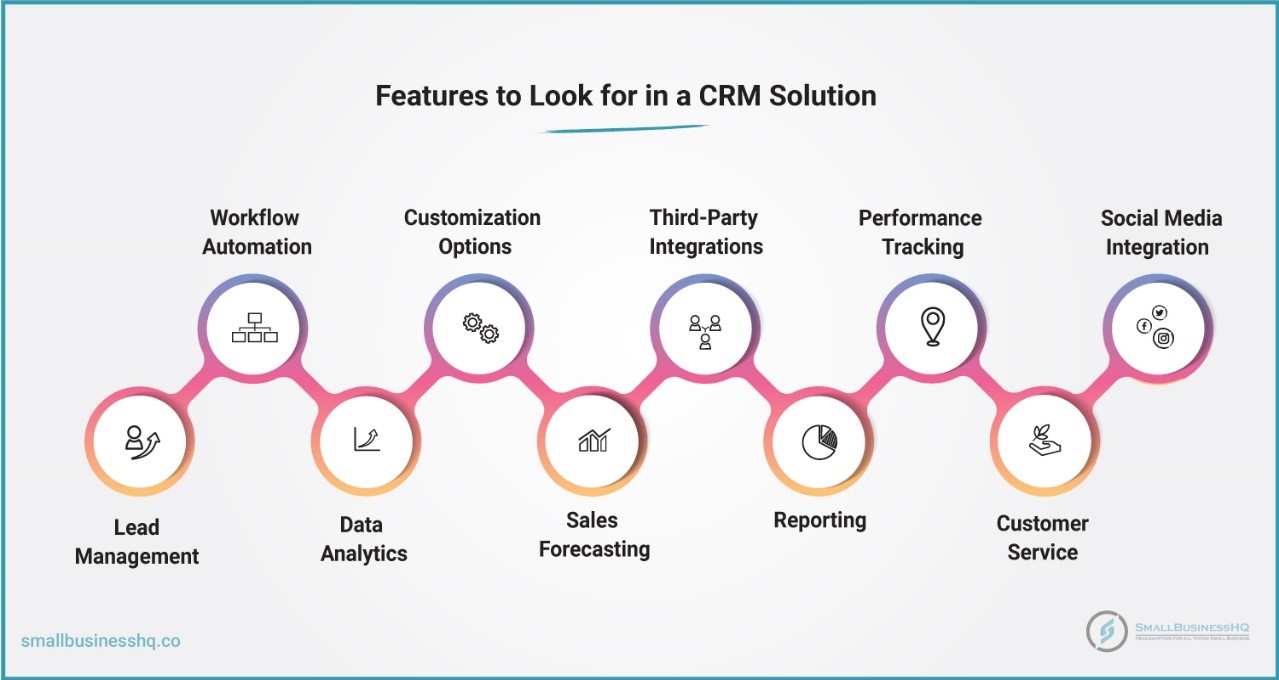
Workflow Automation
When choosing the right CRM for your business, look for one that offers workflow automation. This feature allows you to set rules and automate tasks, making your sales process more efficient.
Setting rules will help your CRM system take the right steps based on customer interaction. This will not only help increase productivity but also give you better control over your resources and let you use your CRM the best way possible.
Not to mention, automation can significantly reduce your employees’ workload and result in cost and time savings for your business.
Customization
Every business has different needs and CRM software should be able to cater to those unique needs. That’s why you should look for customization options when selecting a CRM solution.
You should be able to make some changes according to your needs, like customizing fields and metrics or including a specific feature in your package. You should also be able to customize the CRM with extensions, plugins, and other add-ons to expand the software’s capabilities.
Third-Party Integrations
To perform well, a CRM system needs to be able to collect data from other internal systems. This requires integration with these tools. The more tools it can integrate with, the more streamlined your workflow and sales process are.
There are three ways in which your CRM can integrate with other tools:
- Direct – Apps for which your CRM system offers seamless integration from within the platform. The more direct or native integrations a platform offers, the easier it’ll be for you to connect your entire tech stack.
- Third-Party – These require a third-party or middleman to help with integration. Many software companies, for example, use Zapier to provide additional integrations with various tools and apps.
- API (Application Programming Interface) – These use API codes to make customized connections between two apps. CRM systems that offer these are the most customizable in terms of integrations.
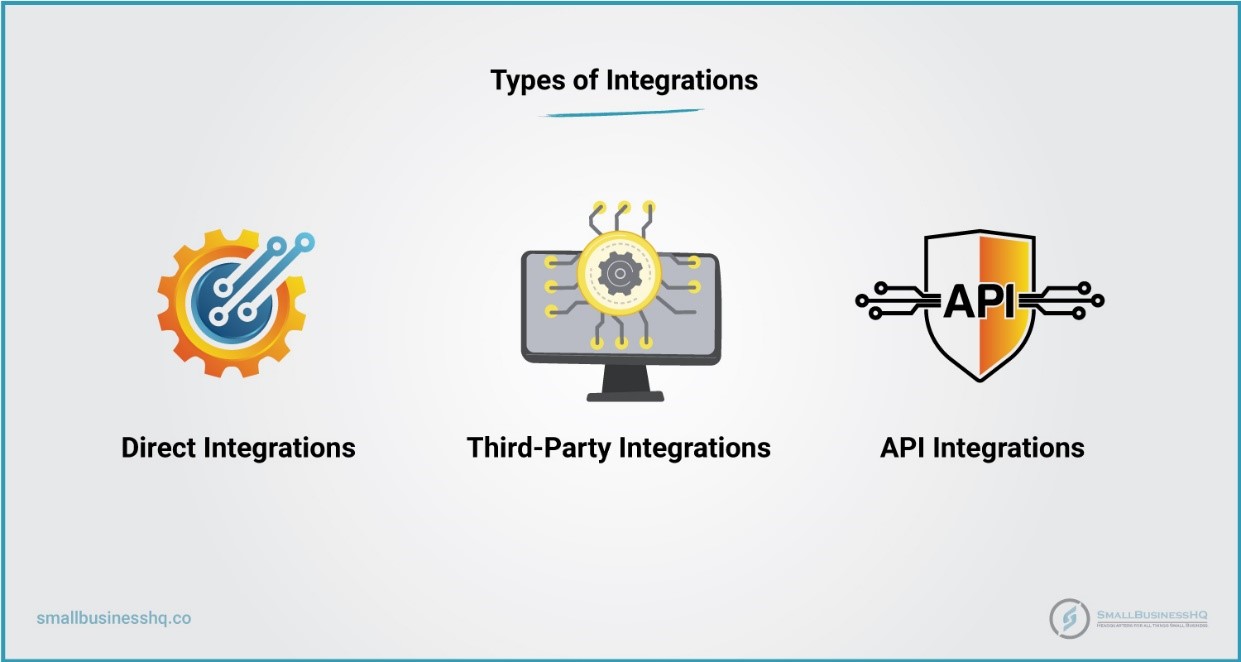
Performance Tracking
This feature is very useful for both employers and employees. With performance tracking embedded in your company’s CRM, managers or supervisors can track various metrics related to employee performance. They can get a clear picture of the productivity and efficiency of individual team members.
At the same time, CRM solutions help employees to track their tasks, goals, work hours, and even sales numbers by themselves. They can use this information to formulate a plan of action to meet their goals.
Built-in Social Media Access
A social CRM solution with built-in social media access will definitely save time for your marketing and public relations teams. Social media features can also assist the sales and marketing teams as they can check public opinions about their products or campaigns in real-time and take necessary action.
With social media access in-built in the CRM, your sales and marketing teams won’t have to spend time on different platforms. What’s more, is they can automate a huge part of social media management as many CRM systems offer marketing automation features as well.
Lead Management
Leads are crucial for all businesses, and CRM solutions can help you manage your leads in the best possible way. Through the lead management feature, you can easily track the complete lifecycle of your customers. It can help you filter out qualified leads and focus more on them than irrelevant leads.
Most CRM solutions will also provide some level of customer segmentation options. This helps you prioritize your leads, and create targeted campaigns.
You can also allocate leads to respective sales executives based on the leads’ importance and the employees’ performance. For example, you can get your best employees to handle the most high-priority leads.
You May Also Like:
Real-Time Data Access
An important feature of CRM solutions is their ability to provide real-time data. It might sound too good to be true, but advanced CRM solutions can provide data about several areas of the customer lifecycle and even your operations.
Getting this real-time data can help you make a better marketing plan or improve your ad campaigns in a short time. In this competitive world, real-time data can be a game-changer.
This feature is super useful if coupled with the next one.
Data Analytics
Customer data analytics features provide insight into customer behaviors and history.
CRM analytics can access a customer’s past interaction history to improve future communications.
Using customer analytics, you can segment your customers and use different marketing and sales tactics to win them over.
Moreover, it can provide an analysis of customer behavior patterns to help you understand the customers better. You can use these analytics to create better customer acquisition and retention strategies.
Sales Forecasting
CRM solutions can forecast or predict future sales based on historical sales data. This helps your sales team be prepared for future demand and take corrective action if sales are predicted to decline.
You can also use the historical sales data to identify trends, like the rise and fall of sales during the seasons.
For example, if, during a certain festive season, your sales graph increases by a certain percentage, the CRM will identify this trend and keep you informed. You can use these sales insights to run your sales promotions and prepare for the rise in demand.
Reporting
Every CRM system should have a built-in data reporting feature.
Reporting helps you understand clearly what is happening and what needs to be done. This feature of CRM solutions can help you plan for the future and improve your sales processes and other business processes.
For instance, reports about lead generation or the number of conversions in a specific period can help you paint a picture of how effective or efficient your teams were in serving the customers.
Choose a CRM system that provides numerous, customizable, and visual reports. The easier it is for you to get the exact report you want, the better.
Here are a few essential reports that are crucial to your success:
- Sales pipeline reports
- Sales activity report
- Sales forecasts
- Profitability and sales performance report
- Campaign performance reports
- Lead source report
- Customer service reports
Customer Service Features
CRM software compiles data about a customer right from the first point of contact to post-sales interactions. This helps you understand a customer’s journey and their expectations from your products or services. This enables your customer support team to provide personalized solutions and experiences to each customer.
Features like automated customer service send out automatic responses immediately to a customer query so that they never feel ignored. The customer lifecycle data can help the customer service representative to handle customer interactions better.
When selecting a CRM solution, look for these customer service features that can improve the customer experience and, thus, retention.
You May Also Like:
Benefits of Using Customer Relationship Management Systems
The benefits of CRM solutions are not limited to sales and marketing but also extend to HR, customer service, supply chain management, and even partner management.
Irrespective of the size of your business, CRM solutions can benefit you in numerous ways.
Not sure how to use CRM to get these benefits? Here are a few ways in which a CRM system can help your business.
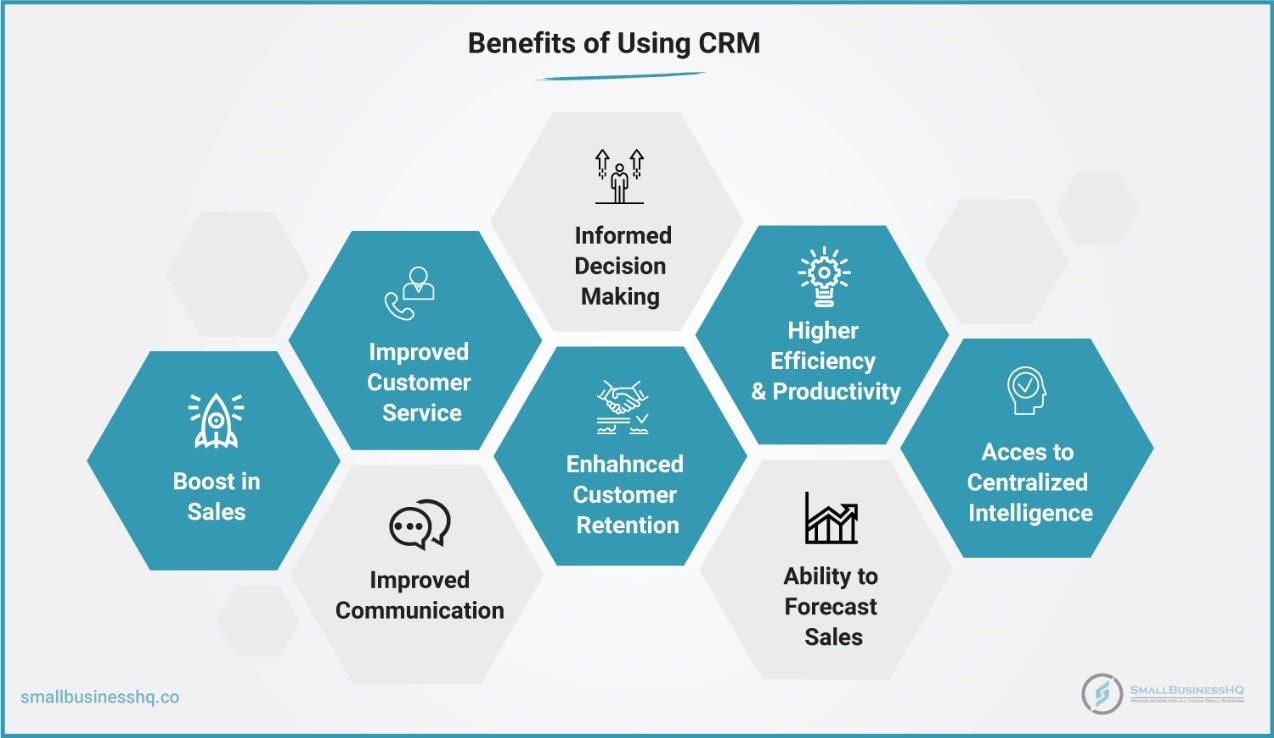
Boost in Sales
One of the main advantages of customer relationship management CRM is its ability to boost sales.By centralizing data, you can streamline your sales process and make better decisions on how to target existing customers and prospects.
Sales executives can use customer data to understand each prospect’s traits, history with your business, and buying behavior. They can also see where a prospect is in the sales funnel and what the best ways are to engage with them.
This helps them close more deals by targeting the right prospects with the right messaging at the right time.
The better your sales team performs using insights from your CRM system and the more streamlined your sales process is, the higher your sales will be.
Improvement in Customer Service
One of the main benefits of using CRM software is that it helps you access all your customer data from one dashboard. This enables you to serve your customers better across channels.
How?
Let’s say a customer interacted with a chatbot to find the solution to a problem. The interaction ended and the customer tried the solution but it didn’t work. Now, the customer called a sales representative but had to explain the entire problem again.
CRM can help your support executives access the past interaction history and continue the conversation from where it last ended. This is a huge step towards improving the customer experience and service.
Informed Decision Making
As mentioned earlier, CRM systems track, organize, and analyze tons of customer, sales, and even operational data. You can gather invaluable insights from this data analysis and make quick and well-informed business decisions.
Here is an example of how to use CRM for decision-making.
You can analyze customer feedback and complaint data to find common problems that your customers face that may be the reason why they switch brands. You can identify these issues and fix them to reduce customer churn.
Improved Internal and External Communications
CRM systems can improve customer communications by providing every customer-facing employee with data on past interactions. This allows them to understand each customer better and talk to them accordingly.
Customer support employees can, for example, check the last customer interaction and take the conversation forward without them having to explain things again.
Similarly, a sales executive could understand where a customer is in the funnel and take appropriate action to close the deal.
CRM solutions not only improve communication with customers but also improve internal communication. Having access to centralized data allows everyone to be on the same page and enables better inter-team collaboration.
Better Customer Retention
We’ve already discussed how you can use CRM to improve your customer service and deliver a better customer experience.
But that’s not all.
CRM can also help you manage your business contacts, send timely communication on their purchases, wish them on their special occasions, and more. With so much customer data on hand, you can build much better customer relationships and improve customer experiences.
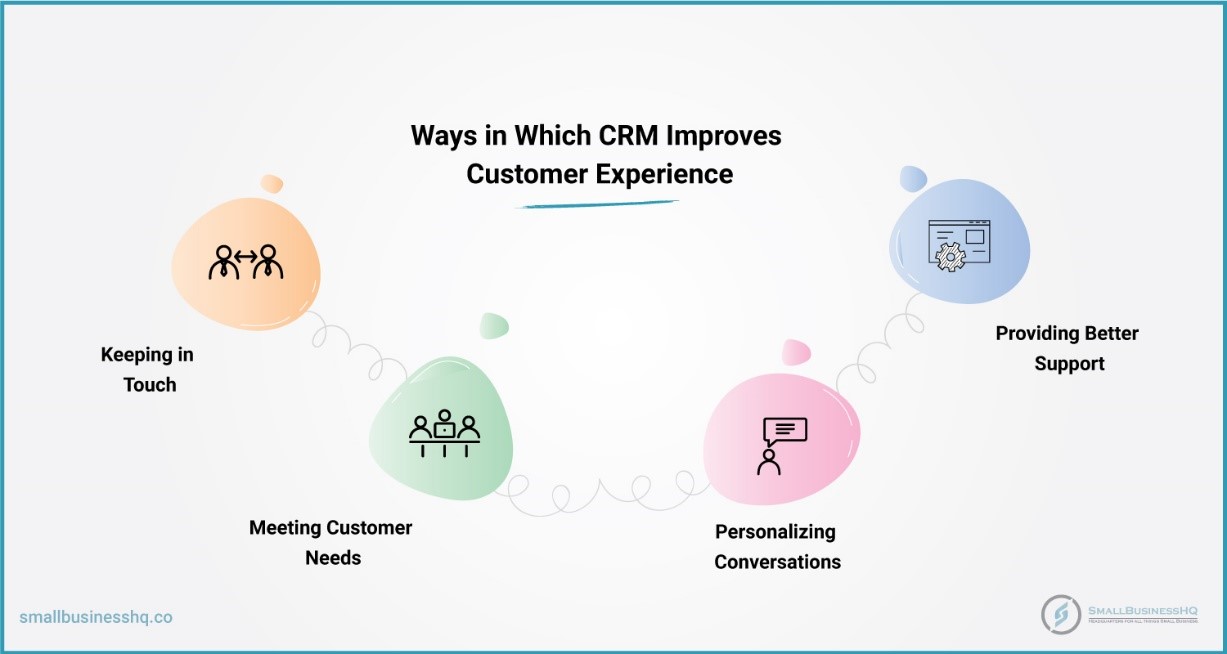
As we all know, better customer experiences often lead to higher customer retention.
You May Also Like:
Higher Efficiency & Productivity
Many advanced CRM solutions provide automation features that allow you to automate repetitive tasks and processes. Not just that, with third-party integrations you can automate entire workflows.
This way, CRM solutions can expedite tasks and save time for your employees. Employees can utilize this time on other tasks, which increases their overall efficiency.
Also, you can clearly see the workflow in your CRM system and identify any flaws or problems.
As it is rightly said, “The first step to solving a problem is to realize there is one.” Since you can detect problems quite easily via CRM solutions, productivity is bound to increase.
Precise Sales Forecast
Analyzing past performance is very important to plan for the future. Using historical sales data, CRM systems can predict future sales to a certain degree of accuracy.
They analyze sales pipeline trends and past purchase history to make predictions on future sales forecasts. This can help you better prepare for future demand and better manage inventory.
This will give you an edge over your competitors and help you optimize your future sales strategy.
Centralized Intelligence
CRM solutions make all the data easily accessible by providing a centralized database. The centralization will save a lot of time, as your teams won’t have to dig old files and records.
For the sales department, it can provide the required ammunition to convert leads into sales. They can also use customer interaction and past activities to get a better image of their needs, tastes, and preferences.
A single source of information also enables better team collaboration. Employees from different teams can access the same data from different locations to work collaboratively.
You May Also Like:
FAQs
1. How can I use CRM?
Here is how to use CRM to build customer relationships and generate more business revenue:
- Define your CRM strategy
- Add users to your CRM system
- Personalize CRM settings for your specific needs
- Import your sales and marketing data
- Integrate CRM with other apps and tools you use
- Customize your CRM dashboard for quicker insights
- Enable reporting
These steps will help you optimize your sales process and better manage existing customers.
2. What are the types of CRMs?
CRM software systems are often grouped into three primary types: operational, analytical, and collaborative. Each type is designed to handle specific business processes.
- Collaborative CRM is useful for businesses that have many departments and struggle with keeping all the departments on the same page.
- Operational CRM is ideal for companies that deal with a bulk of customers and need to cut sales, marketing, and customer support costs.
- Analytical CRM is most suitable for companies that have loads of customer data and operate in a highly competitive market.
3. What features should a CRM have?
Here are some of the features you should look for when selecting a CRM platform for your business:
- Marketing automation
- Customization
- Third-party integration
- Performance metrics tracking
- Social media integration
- Leads and sales management
- Real-time data capture and analysis
- Reporting
- Customer service automation
While it’s great to have all the features, you should also know how to use them. That’s why it’s important to make a list of your requirements and then choose a solution that meets your needs, instead of going for the most advanced solution.
4. What is a CRM system, and how does it work?
CRM stands for customer relationship management. It is a software solution that helps businesses track and manage customer data to improve customer relationships. CRMs are equipped with several features to streamline sales, improve marketing ROI, and help support teams to improve customer satisfaction.
A CRM connects all the data from sales, marketing, and customer support teams to create a centralized dashboard for all data on customers.
5. What is the difference between custom-built and off-the-shelf CRM software?
Custom CRM solutions are specifically designed for your specific business model, organizational workflow, and business needs. Whereas off-the-shelf CRM systems have a standard set of features.
On the positive side, off-the-shelf CRM is ready to use. Also, the cost of implementation is low compared to a custom-built CRM solution that takes months to implement and requires a significant amount of resources.
An off-the-shelf CRM software is suitable for small businesses and mid-scale companies, whereas the custom-built CRM software is perfect for enterprises.
6. What are the major benefits of a CRM system?
Businesses can expect the following benefits when they use a CRM system:
- More sales
- Low customer acquisition costs
- Improved customer service
- Improving customer satisfaction
- Higher customer retention
- Better customer experience
- Effective customer interactions
- Improved internal and external communication
- Higher productivity
- Precise sales forecasting
- Centralized intelligence
7. How to use CRM to increase sales?
Here is how to use CRM to increase sales:
- Create sales-specific dashboards
- Build a sales and marketing pipeline in the CRM
- Share the information across the sales staff
- Track sales individually, per product/service, and as a team
- Create buyer personas to understand customers better
- Filter sales staff specific reports
- Use alerts on mobile and desktop
- Use email automation for lead generation
- Manage sales team tasks on the CRM
- Capture leads directly to the CRM
- Integrate CRM with accounting software to create informed sales promotional schemes
8. How to use CRM for marketing?
Sales and marketing are the main areas where a CRM can help organizations. Over time the use-cases of CRM have evolved from customer management to email marketing and social media management.
Hence, CRM vendors have built dedicated functionalities for marketing purposes. Here is how to use CRM for marketing purposes:
- Managing inbound leads
- Enabling data-driven marketing
- Optimizing customer journeys
- Identifying new sales opportunities
- Automating email marketing
- Posting content on social media
- Improving social media followers
- Facilitating effective communication with the prospects
- Using data insights to improve customer experience
Ready to Use CRM?
There are endless opportunities when it comes to using a CRM system. What makes CRMs interesting in the modern world is their versatility. Businesses of various scales use these tools for improving sales, marketing, and customer relations.
Among all the benefits of CRM, the most interesting one is business intelligence. Hence, if you’re looking for a CRM system for your business, make sure it makes use of data to generate useful insights that allow you to make well-informed business decisions.
If you’re still not sure of how to use CRM for your business, feel free to reach out to us.






